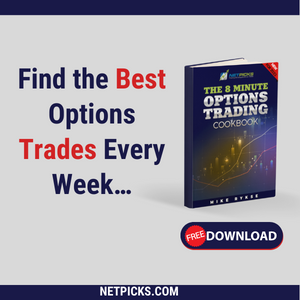The Cheapest Trade With The Return Of Volatility
For investors, the summer doldrums are officially over. It’s not just the start of September signaling the end of the market’s slow period. There’s been a noticeable uptick in major news items – most of them not good.
The biggest market moving news is coming out of North Korea, where the military supposedly detonated a hydrogen bomb. This comes after weeks of test missile launches and plenty of saber rattling. As you’d expect, the financial markets are not fans of having an aggressive, military-based government armed with a full arsenal of nuclear weapons.
In reality though, the North Korea news is just the tip of the iceberg. In the US, it’s the weather and natural disasters which are dominating the headlines. The costs of Hurricane Harvey are just beginning to be uncovered, and now Hurricane Irma is heading straight for Florida. Meanwhile, California and many other areas of the West Coast are ablaze with large wild fires. Some of these fires could threaten regions with higher populations.
The storms and fires come at the same time the most recent jobs report came in worse than expected. Moreover, lower than expected inflation also could be supporting the theory that the economy is not growing as fast as it should be.
Of course, there’s plenty of political turmoil to deal with on top of everything else. The most pressing concern is what will happen with the debt ceiling, which will hit in the next month or so. If raising the debt ceiling is going to be tied to certain other funding scenarios (hurricane relief, DACA, border wall, etc.) then it could be a major ordeal. And notwithstanding initial commitments from the President and the Congress to do a three month extension, if the debt ceiling gets close without a resolution, the market will react negatively based on what we’ve seen in the past.
So what’s it all mean?

Well, as you can see from the chart of the VIX, the market’s fear gauge, we’re certainly seeing an elevated volatility level compared to the past several months. While the VIX isn’t shooting through the roof at the moment, it certainly looks like there’s a higher level of concern among investors in recent weeks.
What’s more, at least one big trader is betting on higher volatility through mid-October. This trader sold VIX October 18th 11 puts and used the proceeds to help finance an 18-24 call spread (buying the 18 selling the 24) for a grand total of $0.34. The entire spread traded 14,000 times, which cost $476,000 in premium.
The spread makes money above $18.34 all the way up to $24, which means $5.66 is the max profit on a major VIX spike. The trader can only lose the $0.34 in premium if the VIX closes between $11 and $18. However, there is “unlimited” loss on the downside since he/she is short puts. Keep in mind though, in any scenario the lowest the VIX can go is probably $9.
What makes the trade interesting is not necessarily the upside part; call spreads are very common in VIX options. However, with the trader selling the 11 puts (for only $0.16!), he or she is clearly not all that concerned about a VIX collapse prior to October expiration.
As I mentioned above, there are more than enough reasons to believe investors will be on guard for the next several weeks.
If you want to get long volatility for speculation or hedging purposes, a simple call spread is a good way to get VIX exposure without breaking the bank. For example, the October 4th 13-18 call spread is trading for around $1. For one month of control, the max loss is $1, max gain $4, and the breakeven point is at $14.
That’s an easy, relatively cheap way to get exposure to any volatility spike. Plus, the 1 to 4 payout ratio is very reasonable for a VIX trade. In other words, the spread is cheap enough to justify its use as a hedge, yet has enough upside potential to be used for speculation purposes.
How to Collect $4,503 in Extra Monthly Income
I’ve just released updated details on a new system for collecting $4,503 in extra monthly income… for the rest of your life. It’s called the Monthly Dividend Paycheck Calendar because if you follow it you’ll collect dividend paychecks every month. And in certain months you can collect up to 6, 7, even 12 paychecks. You need to be enrolled in the next few days in order to make sure you’re on the list of the first payouts and don’t miss your first $4,503 in extra monthly income. Click here to start.
Category: Options Trading



